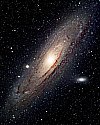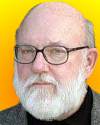
Born 1 Jan 1942; died 1 Jul 2004 at age 62.
American biomedical physicist who helped create (1974) the PET Scanner (Positron Emission Tomography), which is used to detect cancers and other diseases. Michael E Phelps and others share credit for this invention. A patient is prepared for a PET scan with an injection of slightly radioactive material, typically tagging molecules that behave like glucose within the body. Since cancerous tissues consume glucose, the scanner can then detect their location. PET technology can also be employed in the diagnosis of cardiovascular disease and Alzheimer's disease. Hoffman further developed the PET Scanner for use in making quantitative measurements. He became internationally known in the field of medical imaging. By the time he died in 2004, some 1,500 scanners were in use as a powerful diagnostic tool for saving or extending lives.«
American biomedical physicist who helped create (1974) the PET Scanner (Positron Emission Tomography), which is used to detect cancers and other diseases. Michael E Phelps and others share credit for this invention. A patient is prepared for a PET scan with an injection of slightly radioactive material, typically tagging molecules that behave like glucose within the body. Since cancerous tissues consume glucose, the scanner can then detect their location. PET technology can also be employed in the diagnosis of cardiovascular disease and Alzheimer's disease. Hoffman further developed the PET Scanner for use in making quantitative measurements. He became internationally known in the field of medical imaging. By the time he died in 2004, some 1,500 scanners were in use as a powerful diagnostic tool for saving or extending lives.«
Basics of PET Imaging: Physics, Chemistry, and Regulations, by Gopal B. Saha. - book suggestion.
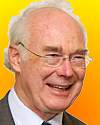
Born 1 Jan 1941.
Sir Martin John Evans is an English physiologist who shared (with Mario R. Capecchi and Oliver Smithies) the 2007 Nobel Prize in Physiology or Medicine, “for their discoveries of principles for introducing specific gene modifications in mice by the use of embryonic stem cells.”
Sir Martin John Evans is an English physiologist who shared (with Mario R. Capecchi and Oliver Smithies) the 2007 Nobel Prize in Physiology or Medicine, “for their discoveries of principles for introducing specific gene modifications in mice by the use of embryonic stem cells.”
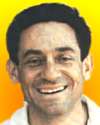
Born 1 Jan 1917; died 16 Jun 1981 at age 64.
American meteorologist who, working with John von Neumann, first applied the electronic computer for weather prediction (1950) and brought about a new understanding of the large-scale flow circulation within the atmosphere. The entire Oct 1947 issue of the Journal of Meteorology published his Ph.D. dissertation (UCLA, 1936) Dynamics of long waves in a baroclinic westerly current. He emphasized the influence of “long waves” in the upper atmosphere rather than the existing practice of emphasis on the polar front. He also simplified analysis of perturbations of these waves using mathematically rigorous methods that yielded useful physical interpretation. He helped the U.S. Weather Bureau set up (1954) a numerical weather prediction unit.«
American meteorologist who, working with John von Neumann, first applied the electronic computer for weather prediction (1950) and brought about a new understanding of the large-scale flow circulation within the atmosphere. The entire Oct 1947 issue of the Journal of Meteorology published his Ph.D. dissertation (UCLA, 1936) Dynamics of long waves in a baroclinic westerly current. He emphasized the influence of “long waves” in the upper atmosphere rather than the existing practice of emphasis on the polar front. He also simplified analysis of perturbations of these waves using mathematically rigorous methods that yielded useful physical interpretation. He helped the U.S. Weather Bureau set up (1954) a numerical weather prediction unit.«
The Atmosphere a Challenge: The Science of Jule Gregory Charney, by Richard S. Lindzen. - book suggestion.
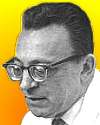
Born 1 Jan 1905; died 15 Jan 1997 at age 92.
American pathologist whose diligent research produced the first evidence in human lung tissue of a causal connection between cigarette smoking and cancer. His results of microscopic examination of thousands of lung tissue slides were prominently cited in the Surgeon General's 1964 landmark report on the dangers of smoking to health. Statistical results had earlier found that the more people smoked, the greater the likelihood of cancer. Instead of statistical analysis of large groups of people, Auerbach directly demonstrated, one patient at a time, that lung tissue samples from smokers showed damage to the tissues. Furthermore, the heavier smokers had greater lung damage. He also studied the effect of passive smoking, and found that breathing in a smoky environment also showed a degree of lung damage.«
American pathologist whose diligent research produced the first evidence in human lung tissue of a causal connection between cigarette smoking and cancer. His results of microscopic examination of thousands of lung tissue slides were prominently cited in the Surgeon General's 1964 landmark report on the dangers of smoking to health. Statistical results had earlier found that the more people smoked, the greater the likelihood of cancer. Instead of statistical analysis of large groups of people, Auerbach directly demonstrated, one patient at a time, that lung tissue samples from smokers showed damage to the tissues. Furthermore, the heavier smokers had greater lung damage. He also studied the effect of passive smoking, and found that breathing in a smoky environment also showed a degree of lung damage.«
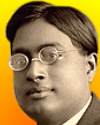
Born 1 Jan 1894; died 4 Feb 1974 at age 80. quotes
Indian physicist and mathematician who collaborated with Albert Einstein to develop a theory of statistical quantum mechanics, now called Bose-Einstein statistics. In his early work in quantum theory (1924), Bose wrote about the Planck black-body radiation law using a quantum statistics of photons, Plank's Law and the Light Quantum Hypothesis. Bose sent his ideas to Einstein, who extended this technique to integral spin particles. Dirac coined the name boson for particles obeying these statistics. Among other things, Bose-Einstein statistics explain how an electric current can flow in superconductors forever, with no loss. Bose also worked on X-ray diffraction, electrical properties of the ionosphere and thermoluminescence.
Indian physicist and mathematician who collaborated with Albert Einstein to develop a theory of statistical quantum mechanics, now called Bose-Einstein statistics. In his early work in quantum theory (1924), Bose wrote about the Planck black-body radiation law using a quantum statistics of photons, Plank's Law and the Light Quantum Hypothesis. Bose sent his ideas to Einstein, who extended this technique to integral spin particles. Dirac coined the name boson for particles obeying these statistics. Among other things, Bose-Einstein statistics explain how an electric current can flow in superconductors forever, with no loss. Bose also worked on X-ray diffraction, electrical properties of the ionosphere and thermoluminescence.
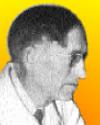
Born 1 Jan 1884; died 8 Dec 1970 at age 86.
American endocrinologist who demonstrated the importance of the pituitary. Beginning in 1916, often collaborating with his wife, Smith set out to study the embryonic frog pituitary. He painstakingly made the microinstruments needed to operate on the pituitary anlage (bud) of the 4-mm tadpole. In 1926, he fashioned a minute pipette to remove the rat pituitary by suction without damage to the brain. He showed that such “hypophysectomy” resulted in the cessation of growth and atrophy of the other adrenal glands, such as the thyroid, the adrenal cortex, and the reproductive glands. Smith was thus able to study “pure” hypopituitarism and hormone replacement therapy and to publish a paper immediately recognized as classic.
American endocrinologist who demonstrated the importance of the pituitary. Beginning in 1916, often collaborating with his wife, Smith set out to study the embryonic frog pituitary. He painstakingly made the microinstruments needed to operate on the pituitary anlage (bud) of the 4-mm tadpole. In 1926, he fashioned a minute pipette to remove the rat pituitary by suction without damage to the brain. He showed that such “hypophysectomy” resulted in the cessation of growth and atrophy of the other adrenal glands, such as the thyroid, the adrenal cortex, and the reproductive glands. Smith was thus able to study “pure” hypopituitarism and hormone replacement therapy and to publish a paper immediately recognized as classic.
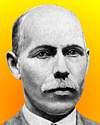

American physicist and radio engineer, known as the “father of navy radar” whose work laid the foundation for U.S. radar development. In Sep 1922, with Leo C. Young, he proposed the detection of intruding ships by transmitting a curtain of high-frequency radio waves across harbour entrances, or between ships, with a receiver to detect disturbances caused by ships moving in the electromagnetic field. Taylor became superintendent of the Radio Division at the newly-established Naval Research Laboratory (1923-45). In 1934, he directed Robert Page to experiment with pulsed high-frequency radio signals for aircraft detection. In 1937, the first 200-MHz shipboard radar was installed. He also investigated ionospheric effects.
The Invention That Changed the World: How a Small Group of Radar Pioneers Won the Second World War, by Robert Buderi. - book suggestion.
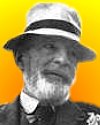
Born 1 Jan 1879; died 11 Feb 1958 at age 79. quotes
Welsh psychoanalyst who introduced psychoanalysis into Great Britain and North America. His admiration for Sigmund Freud's approach to neurosis led him to learn German to read Freud's work. This led to a lifelong association with Freud from 1908. Jones founded the International Journal of Psychoanalysis (1920), and was its editor for two decades. In 1925, he founded and was director of the London Clinic of Psycho-Analysis. When the Nazis invaded Austria in 1938, Jones went to Vienna to enable Freud's escape with his family to London. He published extensively, including a definitive three-volume biography of Freud (1953-57). His interests included chess, and as a youth, figure skating about which he later wrote a textbook.
Welsh psychoanalyst who introduced psychoanalysis into Great Britain and North America. His admiration for Sigmund Freud's approach to neurosis led him to learn German to read Freud's work. This led to a lifelong association with Freud from 1908. Jones founded the International Journal of Psychoanalysis (1920), and was its editor for two decades. In 1925, he founded and was director of the London Clinic of Psycho-Analysis. When the Nazis invaded Austria in 1938, Jones went to Vienna to enable Freud's escape with his family to London. He published extensively, including a definitive three-volume biography of Freud (1953-57). His interests included chess, and as a youth, figure skating about which he later wrote a textbook.
Ernest Jones: Freud's Alter Ego, by Vincent Brome. - book suggestion.
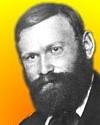
Born 1 Jan 1878; died 3 Feb 1929 at age 51.
Agner Krarup Erlang was a Danish mathematician who was a pioneer in the study of telecommunications traffic. He developed mathematical theories applying the theory of probability, while working for the Copenhagen Telephone Company. He provided significant insights for planning the operation of automatic telephone exchanges that proved so useful that his formulas were used by telephone companies in other countries, including Britain. He died unexpectedly at age 51. Nearly two decades after his early death, an international committee for telephone communications applied his name to the erlang unit to be the International Unit of Telephone Traffic. The Erlang distribution, also known by his name, refers to the statistical probability distribution that he used in his work, a special case of the Gamma distribution, used for traffic models.«
Agner Krarup Erlang was a Danish mathematician who was a pioneer in the study of telecommunications traffic. He developed mathematical theories applying the theory of probability, while working for the Copenhagen Telephone Company. He provided significant insights for planning the operation of automatic telephone exchanges that proved so useful that his formulas were used by telephone companies in other countries, including Britain. He died unexpectedly at age 51. Nearly two decades after his early death, an international committee for telephone communications applied his name to the erlang unit to be the International Unit of Telephone Traffic. The Erlang distribution, also known by his name, refers to the statistical probability distribution that he used in his work, a special case of the Gamma distribution, used for traffic models.«
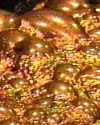
Born 1 Jan 1867; died 4 Mar 1944 at age 77.
British technologist who with his brother Francis Edward Elmore, jointly developed flotation processes to separate valuable ore, such as copper, from the gangue (worthless rock) with which it is associated when mined. In 1898, they obtained a patent for the first practical equipment (British patent No. 21,948). Pulverized ore is mixed with water and brought into contact with thick oil. The oil entraps the metallic constituents, which are afterwards separated, and gangue passed away with the water. They installed their equipment at mines in north Wales, northern England, and at the Broken Hill lead and zinc mines in Australia. Today, flotation methods remain vital in the mining industry, processing millions of tons of ores each year. more
British technologist who with his brother Francis Edward Elmore, jointly developed flotation processes to separate valuable ore, such as copper, from the gangue (worthless rock) with which it is associated when mined. In 1898, they obtained a patent for the first practical equipment (British patent No. 21,948). Pulverized ore is mixed with water and brought into contact with thick oil. The oil entraps the metallic constituents, which are afterwards separated, and gangue passed away with the water. They installed their equipment at mines in north Wales, northern England, and at the Broken Hill lead and zinc mines in Australia. Today, flotation methods remain vital in the mining industry, processing millions of tons of ores each year. more
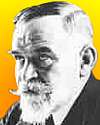
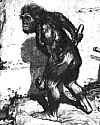
Boule's Neanderthal
French paleontologist, geologist and physical anthropologist whose extensively studied human fossils from Europe, North Africa, and the Middle East, and made the first complete reconstruction of a Neanderthal skeleton (La Chapelle-aux-Saints, France, 1908). His report on Neanderthal anatomy was the most complete report since the species was first discovered in 1856. He believed they were a separate species, but an evolutionary dead-end, not a human ancestor. He published one of the first illustrations of Neanderthals. His description of them as a shuffling, bent-kneed, and hairy creature capable of “rudimentary intellectual abilities” became stereotypical. New research in the 1950s corrected this view, when the arthritic condition of the individual was recognized. He wrote Les Hommes fossiles (1921; Fossil Men). He had a mixed reaction to the Piltdown “discovery,” agreeing that the cranium was legimate but correctly recognizing that the jaw belonged to an ape.
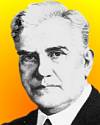
Born 1 Jan 1859; died 27 Dec 1923 at age 64.
Michael Joseph Owens was an American inventor and manufacturer who invented the automatic glass bottle making machine that revolutionized the industry. His mechanization of the glass-blowing process eliminated child labor from glass-bottle factories. He took out patents in 1895 on a glass molding machine capable of crude results. In 1903, he formed the Owens Bottle Machine Company. By the next year his continuing improvements led to patents on a machine capable of producing four bottles per second. Owens' machines could be built with from six to twenty arms, each blowing a bottle. He expanded with a factory in England in 1905. He retired from management in 1919 to focus on inventing, and eventually held 45 U.S. patents.« more
Michael Joseph Owens was an American inventor and manufacturer who invented the automatic glass bottle making machine that revolutionized the industry. His mechanization of the glass-blowing process eliminated child labor from glass-bottle factories. He took out patents in 1895 on a glass molding machine capable of crude results. In 1903, he formed the Owens Bottle Machine Company. By the next year his continuing improvements led to patents on a machine capable of producing four bottles per second. Owens' machines could be built with from six to twenty arms, each blowing a bottle. He expanded with a factory in England in 1905. He retired from management in 1919 to focus on inventing, and eventually held 45 U.S. patents.« more
Michael Owens and the Glass Industry, by Quentin Skrabec Jr. - book suggestion.
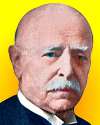
Born 1 Jan 1854; died 26 May 1933 at age 79. quotes
American pathologist, remembered for his contribution in a monograph on amoebic dysentery (1891) which described detailed observations of it and its parasite. His post-M.D. (1878) work included many autopsies, sparking his interest in pathology. He studied in Europe (1880-83), where pathology was more advanced than in the U.S. In his first significant research, he confirmed Laveran's discovery of the sporozoan parasite that causes malaria, Plasmodium malariae (1893-94), and upon returning home, was the first in the U.S. to describe and picture it. Councilman also did research on diphtheria, cerebrospinal meningitis, nephritis, and smallpox. He was the principal founder of the American Association of Pathologists and Bacteriologists.
American pathologist, remembered for his contribution in a monograph on amoebic dysentery (1891) which described detailed observations of it and its parasite. His post-M.D. (1878) work included many autopsies, sparking his interest in pathology. He studied in Europe (1880-83), where pathology was more advanced than in the U.S. In his first significant research, he confirmed Laveran's discovery of the sporozoan parasite that causes malaria, Plasmodium malariae (1893-94), and upon returning home, was the first in the U.S. to describe and picture it. Councilman also did research on diphtheria, cerebrospinal meningitis, nephritis, and smallpox. He was the principal founder of the American Association of Pathologists and Bacteriologists.
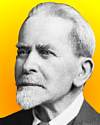
Born 1 Jan 1854; died 7 May 1941 at age 87. quotes
Scottish anthropologist , folklorist, classical scholar, and author of The Golden Bough, a study in Comparative Religion, which traced the evolution of human behavior. This vast collection of savage and civilized beliefs and customs, myth, magic, religion, ritual, and taboo is considered among the greatest works of anthropology. It was named after the golden bough in the sacred grove at Nemi, near Rome. It began as two volumes in 1890 and became 12 volumes by 1915. He did no field work; his research was library-based. Although still considered a storehouse of ethnographic information, his theories belong in history rather than current ideas of anthropology. His notions of totemism were subsequently destroyed by Lévi-Stauss.
Scottish anthropologist , folklorist, classical scholar, and author of The Golden Bough, a study in Comparative Religion, which traced the evolution of human behavior. This vast collection of savage and civilized beliefs and customs, myth, magic, religion, ritual, and taboo is considered among the greatest works of anthropology. It was named after the golden bough in the sacred grove at Nemi, near Rome. It began as two volumes in 1890 and became 12 volumes by 1915. He did no field work; his research was library-based. Although still considered a storehouse of ethnographic information, his theories belong in history rather than current ideas of anthropology. His notions of totemism were subsequently destroyed by Lévi-Stauss.
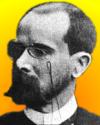
Born 1 Jan 1852; died 1904.
French chemist who spectroscopically discovered the element europium (1901) in material carefully separated from samarium magnesium nitrate. His study of terpenes and ethers helped the perfume industry. Despite the loss of an eye in a explosion while studying nitrogen sulphides, he continued vacuum studies of volatility of metals at low temperatures and pressures. He designed a machine to reach low temperatures by compressing gases and then allowing them to expand. Using high temperature spark spectra from platinum electrodes he produced bright lines to study rare earths. His separation method for rare earths used fractional crystallization in aqueous solution. When asked by the Curies, he used spectroscopy to verify the existence of radium.
French chemist who spectroscopically discovered the element europium (1901) in material carefully separated from samarium magnesium nitrate. His study of terpenes and ethers helped the perfume industry. Despite the loss of an eye in a explosion while studying nitrogen sulphides, he continued vacuum studies of volatility of metals at low temperatures and pressures. He designed a machine to reach low temperatures by compressing gases and then allowing them to expand. Using high temperature spark spectra from platinum electrodes he produced bright lines to study rare earths. His separation method for rare earths used fractional crystallization in aqueous solution. When asked by the Curies, he used spectroscopy to verify the existence of radium.
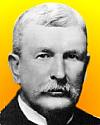
Born 1 Jan 1849; died 5 Dec 1920 at age 71.
American inventor of the crawler track (1904) in the form of an endless chain tread for his steam traction engine. The Caterpillar name resulted when a man photographing one of Holt's track-laying vehicles viewed the motion of the track as it travelled and said it reminded him of a caterpillar. Holt liked it as a nickname, and began using the name for his crawler track. Some years later, when his company merged with another manufacturer, Caterpillar was first used in the company name.
American inventor of the crawler track (1904) in the form of an endless chain tread for his steam traction engine. The Caterpillar name resulted when a man photographing one of Holt's track-laying vehicles viewed the motion of the track as it travelled and said it reminded him of a caterpillar. Holt liked it as a nickname, and began using the name for his crawler track. Some years later, when his company merged with another manufacturer, Caterpillar was first used in the company name.
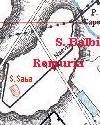
Born 1 Jan 1847; died 21 May 1929 at age 82.
Rodolfo Amadeo Lanciani was an Italian archaeologist was, from 1878, a professor of ancient topology, the study of the spacial relationships of physical features in an archaeological site. In this, he was an expert for Ostia and Rome. In Forma Urbis Romae he published 46 plates of exquisitely detailed 1:1000 scale maps making a definitive atlas of ancient ruins, streets and structures of ancient and modern (c.1900) Rome coded in different colours. Though present Rome may be different, the maps retain information on ruins no longer visible to the normal visitor. Starting at age 20, Lancini was an assistant at the excavation of Trajan's harbour at Porto, which he carefully described (1868). Later, he was appointed by the University of Rome to head excavations (1875) and discovered many important antiquities at Rome, Tivoli, and Ostia.«[Sources differ on date of birth. EB gives 1 Jan 1947; WWWSci gives 1 Jan 1946.]
Rodolfo Amadeo Lanciani was an Italian archaeologist was, from 1878, a professor of ancient topology, the study of the spacial relationships of physical features in an archaeological site. In this, he was an expert for Ostia and Rome. In Forma Urbis Romae he published 46 plates of exquisitely detailed 1:1000 scale maps making a definitive atlas of ancient ruins, streets and structures of ancient and modern (c.1900) Rome coded in different colours. Though present Rome may be different, the maps retain information on ruins no longer visible to the normal visitor. Starting at age 20, Lancini was an assistant at the excavation of Trajan's harbour at Porto, which he carefully described (1868). Later, he was appointed by the University of Rome to head excavations (1875) and discovered many important antiquities at Rome, Tivoli, and Ostia.«[Sources differ on date of birth. EB gives 1 Jan 1947; WWWSci gives 1 Jan 1946.]
The Ruins and Excavations of Ancient Rome, by Rodolfo Lanciani. - book suggestion.
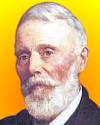
Born 1 Jan 1815; died 2 Feb 1906 at age 91.
Samuel Cunliffe Lister, 1st Baron Masham of Swinton was an English industrialist and inventor of successful wool-combing and waste-silk spinning machines. The demand for wool that resulted from less expensive products stimulated the Australian wool trade. By 1856, he had several mills in Yorkshire, and abroad. He also created machines to use “chassum,” comprising damaged cocoons, remnants or fibres previously rejected as waste in silk-spinning. By 1867, after ten years in development, eventually those machines made him a further fortune. In 1867, he introduced velvet power looms for making piled fabrics. His inventiveness included a 1848 patent for automatic compressed air brakes for railways. The textile manufacturing company he established in 1838 exists today.
Samuel Cunliffe Lister, 1st Baron Masham of Swinton was an English industrialist and inventor of successful wool-combing and waste-silk spinning machines. The demand for wool that resulted from less expensive products stimulated the Australian wool trade. By 1856, he had several mills in Yorkshire, and abroad. He also created machines to use “chassum,” comprising damaged cocoons, remnants or fibres previously rejected as waste in silk-spinning. By 1867, after ten years in development, eventually those machines made him a further fortune. In 1867, he introduced velvet power looms for making piled fabrics. His inventiveness included a 1848 patent for automatic compressed air brakes for railways. The textile manufacturing company he established in 1838 exists today.
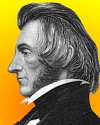
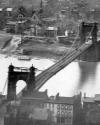
Wheeling suspension bridge (photo 1885)
American engineer who built (1842) the first wire-cable suspension bridge in America, 358-ft (109-m) across the Schuylkill River at Fairmont, Penn. Its 27-ft wide truss-stiffened deck was supported by five wire cables on each side. The 1,010-ft (308-m) span suspension railway bridge he built (1846-49) across the Ohio River at Wheeling , WV, was then the world's longest of its kind. He built the “Mountain Top Track”across the summit of the Blue Ridge at Rock Fish Gap, Virgina (1854). Ellet was a colonel during the Civil War. He formed the Mississippi Marine Rams war fleet with nine heavy, frame-reinforced steam ships used as battering-rams. He attacked the Confederate fleet on the Mississippi River, and won the Battle of Memphis (6 Jun 1862). He died later, from a pistol ball shot to the knee during the battle.«
Charles Ellet, Jr., The Engineer as Individualist, by Gene D Lewis. - book suggestion.
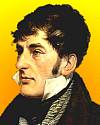
Born 1 Jan 1778; died 12 Dec 1846 at age 68.
French naturalist and artist who is remembered for high quality natural history illustrations. He travelled to Australia under Nicolas Baudin on a scientific expedition (1800-04) and returned to France with collection of over 100,000 zoological specimens, including some 2,500 new species. In 1815, he began an association with William Maclure on a scientific excursion to the principal islands of the Lesser Antilles to make a study of the geology, followed by further work in the U.S. revising Maclure's geological maps. From 1816-37, while living in the U.S., he explored the Mississippi Valley. Lesueur followed a particular interest in ichthyology. He made the first scientific study of the archaeological prehistoric mounds in vicinity of New Harmony, Indiana.
French naturalist and artist who is remembered for high quality natural history illustrations. He travelled to Australia under Nicolas Baudin on a scientific expedition (1800-04) and returned to France with collection of over 100,000 zoological specimens, including some 2,500 new species. In 1815, he began an association with William Maclure on a scientific excursion to the principal islands of the Lesser Antilles to make a study of the geology, followed by further work in the U.S. revising Maclure's geological maps. From 1816-37, while living in the U.S., he explored the Mississippi Valley. Lesueur followed a particular interest in ichthyology. He made the first scientific study of the archaeological prehistoric mounds in vicinity of New Harmony, Indiana.
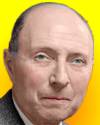
Died 1 Jan 1995 at age 92 (born 17 Nov 1902). quotes
Hungarian-American physicist who shared the 1963 Nobel Prize for Physics (with Maria Goeppert Mayer and Johannes Hans Jensen) for his insight into quantum mechanics, for his contributions to the theory of the atomic nucleus and the elementary particles, particularly through the discovery and application of fundamental symmetry principles. He made many contributions to nuclear physics and played a prominent role in the development of the atomic bomb and nuclear energy.
Hungarian-American physicist who shared the 1963 Nobel Prize for Physics (with Maria Goeppert Mayer and Johannes Hans Jensen) for his insight into quantum mechanics, for his contributions to the theory of the atomic nucleus and the elementary particles, particularly through the discovery and application of fundamental symmetry principles. He made many contributions to nuclear physics and played a prominent role in the development of the atomic bomb and nuclear energy.
The Recollections of Eugene P. Wigner, by Eugene Paul Wigner, Andrew Szanton. - book suggestion.
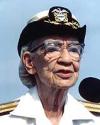
Died 1 Jan 1992 at age 85 (born 9 Dec 1906). quotes
Grace Murray Hopper (née Grace Brewster Murray) was an American mathematician and rear admiral in the U.S. Navy. She pioneered the development of computer technology. She helped John Presper Eckert and John William Mauchly in designing and developing the BINAC (Binary Automatic Computer). Her ideas contributed to the first commercial electronic computer, Univac I, and naval applications for COBOL (co-mmon b-usiness o- riented l-anguage). With a Ph.D. in Mathematics from Yale University (1934), she taught mathematics (Vassar, 1931-43), before she joined the Naval Reserve. In 1944, she was commissioned as a Lieutenant (Junior Grade), assigned to the Bureau of Ordnance where she became involved in the early development of the electronic computer. For more than four decades, she was a leader in computer applications and programming languages.
Grace Murray Hopper (née Grace Brewster Murray) was an American mathematician and rear admiral in the U.S. Navy. She pioneered the development of computer technology. She helped John Presper Eckert and John William Mauchly in designing and developing the BINAC (Binary Automatic Computer). Her ideas contributed to the first commercial electronic computer, Univac I, and naval applications for COBOL (co-mmon b-usiness o- riented l-anguage). With a Ph.D. in Mathematics from Yale University (1934), she taught mathematics (Vassar, 1931-43), before she joined the Naval Reserve. In 1944, she was commissioned as a Lieutenant (Junior Grade), assigned to the Bureau of Ordnance where she became involved in the early development of the electronic computer. For more than four decades, she was a leader in computer applications and programming languages.
Grace Hopper: Admiral Of The Cyber Sea, by Kathleen Broome Williams. - book suggestion.
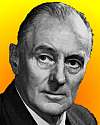

Severn Bridge
British civil engineer who pioneered new designs, construction methods and use of high-tensile steels for several major bridges including the 3,300-foot (1,006-metre) Firth of Forth Road bridge in Scotland, one of the longest in the world. He also designed the Severn Bridge, crossing the River Severn near Bristol, England (1966) 3240-foot span with 400-foot towers. It has an aerodynamic steel box girder, inclined hanger cables to provide added damping and an orthotropic steel deck. His work includes designs for Auckland Harbour (N.Z.), Volta River (Ghana), Bosphorus (Turkey) and Humber bridges; and radio telescopes, goliath cranes and other steel structures. He gained his experience as an engineer during WW II developing all-welded ships.
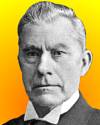
Died 1 Jan 1931 at age 79 (born 16 Mar 1851). quotes
Dutch botanist who was one of the first microbiologists to recognize the importance of lactic acid bacteria for food production. He contributed to agriculture, botany, microbiology, chemistry and genetics. In research on gall wasps and the formation of galls (1882) he laid groundwork for the theory of ontogeny in higher plants and animals whereby growth enzymes act in series in a fixed order (1917). Since his father was a tobacco dealer who went bankrupt, he researched the tobacco mosaic virus, which causes a disease of tobacco plants with serious economic impact. He discovered that even after filtering the sap of an infected plant to remove bacteria, the liquid was still able to carry infection to another plant. Thus he knew the disease was not due to bacteria, but by something else in the the liquid, which he called a filterable virus (from Latin word for poison) but which later researchers demonstrated in fact had a particle form.«
Dutch botanist who was one of the first microbiologists to recognize the importance of lactic acid bacteria for food production. He contributed to agriculture, botany, microbiology, chemistry and genetics. In research on gall wasps and the formation of galls (1882) he laid groundwork for the theory of ontogeny in higher plants and animals whereby growth enzymes act in series in a fixed order (1917). Since his father was a tobacco dealer who went bankrupt, he researched the tobacco mosaic virus, which causes a disease of tobacco plants with serious economic impact. He discovered that even after filtering the sap of an infected plant to remove bacteria, the liquid was still able to carry infection to another plant. Thus he knew the disease was not due to bacteria, but by something else in the the liquid, which he called a filterable virus (from Latin word for poison) but which later researchers demonstrated in fact had a particle form.«
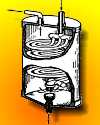
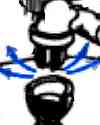
needle valve detail
English engineer and inventor who invented the Hampson Air-Liquefier, a self-intensive method to refrigerate gases and to liquify air (GB patent No. 10165, 23 May 1895) independent of Carl Linde and Georges Claude. He supplied quantities of liquid air to William Ramsay, which enabled him to discover neon. In reports of the liquefaction of hydrogen and helium by the prominent scientist James Dewar, any of Hampson's priority was suppressed. Hampson also devised an apparatus to make surgical pencils of carbonic acid snow, developed a radiometer for measuring doses of X-rays, and discovered how contraction large muscles of the body by an electrical stimulation could moderate the beating of the heart. He wrote books including Paradoxes of Nature and Science (1906) and Radium Explained (1905); and journal articles.«[Image left: Essential features of the Air-Liquifier. Air is compressed and enters the tubing at the top, passes through many tight coils of narrow tube to cool when it exits at the bottom needle valve (detail in image right). Expansion produces more cooling, and that air travels up cooling the spirals. The air that exits at the top is compressed and cycled through again and again, becoming colder each time (the self-intensive method). When sufficiently cold, liquified air falls in drops from the needle valve, collects in the bottom cup, and can be draw off periodically.]
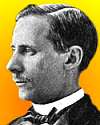
Died 1 Jan 1896 at age 69 (born 1 Sep 1826). quotes
Alfred Ely Beach was an American inventor and publisher of Scientific American magazine which reported on technology developments and patents in the 19th-century. It is still published today, one of the world's leading science magazines. Beach himself invented a tunneling shield and built the pneumatic tube subway which propelled a carriage by means of air pressure generated by huge fans. The tunnel was short - one block - so it operated as a demonstration (1870-73), with one station and train car. In 1856 he won First Prize and a gold medal at New York's Crystal Palace Exhibition. Beach had invented a typewriter for the blind, resembling the modern typewriter in the arrangement of its keys and typebars, but embossed its letters on a narrow paper strip instead of a sheet.
Alfred Ely Beach was an American inventor and publisher of Scientific American magazine which reported on technology developments and patents in the 19th-century. It is still published today, one of the world's leading science magazines. Beach himself invented a tunneling shield and built the pneumatic tube subway which propelled a carriage by means of air pressure generated by huge fans. The tunnel was short - one block - so it operated as a demonstration (1870-73), with one station and train car. In 1856 he won First Prize and a gold medal at New York's Crystal Palace Exhibition. Beach had invented a typewriter for the blind, resembling the modern typewriter in the arrangement of its keys and typebars, but embossed its letters on a narrow paper strip instead of a sheet.
Secret Subway: The Fascinating Tale of an Amazing Feat of Engineering, by Martin W. Sandler. - book suggestion.
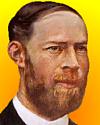
Died 1 Jan 1894 at age 36 (born 22 Feb 1857). quotes
Heinrich Rudolf Hertz was a German physicist who was the first to broadcast and receive radio waves. He studied under Kirchhoff and Helmholtz in Berlin, and became professor at Bonn in 1889. His main work was on electromagnetic waves (1887). Hertz generated electric waves by means of the oscillatory discharge of a condenser through a loop provided with a spark gap, and then detecting them with a similar type of circuit. Hertz's condenser was a pair of metal rods, placed end to end with a small gap for a spark between them. Hertz was also the first to discover the photoelectric effect. The unit of frequency - one cycle per second - is named after him. Hertz died of blood poisoning in 1894 at the age of 37.
Heinrich Rudolf Hertz was a German physicist who was the first to broadcast and receive radio waves. He studied under Kirchhoff and Helmholtz in Berlin, and became professor at Bonn in 1889. His main work was on electromagnetic waves (1887). Hertz generated electric waves by means of the oscillatory discharge of a condenser through a loop provided with a spark gap, and then detecting them with a similar type of circuit. Hertz's condenser was a pair of metal rods, placed end to end with a small gap for a spark between them. Hertz was also the first to discover the photoelectric effect. The unit of frequency - one cycle per second - is named after him. Hertz died of blood poisoning in 1894 at the age of 37.
The Creation of Scientific Effects, by Jed Z. Buchwald. - book suggestion.
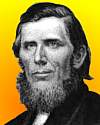
Died 1 Jan 1872 at age 59 (born 12 Aug 1812).
American inventor and manufacturer whose "Ball's Ohio Mower" (patented 1 Dec1857) was the first widely successful of the two-wheeled flexible or hinged bar mowers, which greatly influenced the change from single driving-wheel machines to those with double drivers. His first invention was a turn-top stove. In 1840 he established a foundry for making ploughs. The “Ball's Blue Plough” he invented sold well. In 1851, he joined with others to form a larger company with factories at Canton, Ohio. His “Ohio Mower” (1854), “World Mower and Reaper,” and “Buckeye Machine” (1858) sold extensively. Thereafter his “New American Harvester”" produced up to 10,000 of these machines annually (1865). Nevertheless, he died impoverished.« more
American inventor and manufacturer whose "Ball's Ohio Mower" (patented 1 Dec1857) was the first widely successful of the two-wheeled flexible or hinged bar mowers, which greatly influenced the change from single driving-wheel machines to those with double drivers. His first invention was a turn-top stove. In 1840 he established a foundry for making ploughs. The “Ball's Blue Plough” he invented sold well. In 1851, he joined with others to form a larger company with factories at Canton, Ohio. His “Ohio Mower” (1854), “World Mower and Reaper,” and “Buckeye Machine” (1858) sold extensively. Thereafter his “New American Harvester”" produced up to 10,000 of these machines annually (1865). Nevertheless, he died impoverished.« more
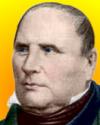
Died 1 Jan 1862 at age 60 (born 24 Sep 1801).
Mikhail Vasilievich Ostrogradsky was a Russian mathematician who contributed in the fields of integral calculus and mathematical physics. He wrote textbooks that help improve the standard in the teaching of mathematics in Russia. From 1847, he also served as chief inspector of the mathematical sciences in military schools. He is regarded as the founder of the Russian school of theoretical mechanics, in a wide range of topics, including heat, elasticity, percussion theory, ballistics and probability theory. He developed methods of analysis, such as in boundary-value problems and separating variables. Most importantly, he dealt with variational principles.«
Mikhail Vasilievich Ostrogradsky was a Russian mathematician who contributed in the fields of integral calculus and mathematical physics. He wrote textbooks that help improve the standard in the teaching of mathematics in Russia. From 1847, he also served as chief inspector of the mathematical sciences in military schools. He is regarded as the founder of the Russian school of theoretical mechanics, in a wide range of topics, including heat, elasticity, percussion theory, ballistics and probability theory. He developed methods of analysis, such as in boundary-value problems and separating variables. Most importantly, he dealt with variational principles.«
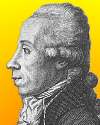
Died 1 Jan 1817 at age 73 (born 1 Dec 1743). quotes
German chemist, who as a founder of analytical chemistry discovered uranium (1789), zirconium (1789), cerium (1803), and contributed to the identification of others. Although he did not isolate them as pure metal samples, he was able to recognize them as new elements. He apprenticed at age 16, to an apothecary. After reading chemistry at Hanover, he settled in Berlin (1771) and started his own apothecary shop (1780). By the late 1780, he was Europe's leading analytical chemist. Klaproth found ways of treating particularly insoluble compounds, took care to avoid contamination from his apparatus, and significantly insisted on reporting "small" weight discrepancies in analytical work as consistent results. He spread the ideas of Antoine Lavoisier.
German chemist, who as a founder of analytical chemistry discovered uranium (1789), zirconium (1789), cerium (1803), and contributed to the identification of others. Although he did not isolate them as pure metal samples, he was able to recognize them as new elements. He apprenticed at age 16, to an apothecary. After reading chemistry at Hanover, he settled in Berlin (1771) and started his own apothecary shop (1780). By the late 1780, he was Europe's leading analytical chemist. Klaproth found ways of treating particularly insoluble compounds, took care to avoid contamination from his apparatus, and significantly insisted on reporting "small" weight discrepancies in analytical work as consistent results. He spread the ideas of Antoine Lavoisier.
The Formation of the German Chemical Community, 1720-1795, by Karl Hufbauer. - book suggestion.
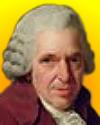
Died 1 Jan 1800 at age 83 (born 29 May 1716).
French naturalist who was a prolific pioneer in the fields of comparative anatomy and paleontology. Daubenton completed many zoological descriptions (including 182 species of quadrupeds for the first section of Georges Buffon's work Histoire naturelle, 1794-1804). His dissections contributed to productive studies in the comparative anatomy of recent and fossil animals, plant physiology, and mineralogy. He conducted agricultural experiments and introduced Merino sheep to France. In 1793, he became the first director of the Museum of Natural History in Paris.
French naturalist who was a prolific pioneer in the fields of comparative anatomy and paleontology. Daubenton completed many zoological descriptions (including 182 species of quadrupeds for the first section of Georges Buffon's work Histoire naturelle, 1794-1804). His dissections contributed to productive studies in the comparative anatomy of recent and fossil animals, plant physiology, and mineralogy. He conducted agricultural experiments and introduced Merino sheep to France. In 1793, he became the first director of the Museum of Natural History in Paris.
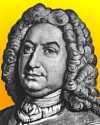
Died 1 Jan 1748 at age 80 (born 6 Aug 1667). quotes
Swiss mathematician (aka Jean Bernoulli) who is noted for his discovery of the exponential calculus (1691) and the equation of the catenary (1690). His first publication was on the process of fermentation (1690), but thereafter, he studied and taught mathematics for the rest of his life. He followed his his brother Jacques as professor of mathematics at Basle. He was the first to use g to represent the acceleration due to gravity. He applied the then new calculus to the measurement of curves, to differential equations, and to mechanical problems. He introduced the famous brachistochrome problem. “Archimedes of his age” was inscribed on his tombstone. The mathematician Jacob Bernoulli was his brother, and the mathematician Daniel Bernoulli was his son.[6 Aug 1667 is the New Style date of birth. Old Style is 27 Jul 1667.]
Swiss mathematician (aka Jean Bernoulli) who is noted for his discovery of the exponential calculus (1691) and the equation of the catenary (1690). His first publication was on the process of fermentation (1690), but thereafter, he studied and taught mathematics for the rest of his life. He followed his his brother Jacques as professor of mathematics at Basle. He was the first to use g to represent the acceleration due to gravity. He applied the then new calculus to the measurement of curves, to differential equations, and to mechanical problems. He introduced the famous brachistochrome problem. “Archimedes of his age” was inscribed on his tombstone. The mathematician Jacob Bernoulli was his brother, and the mathematician Daniel Bernoulli was his son.[6 Aug 1667 is the New Style date of birth. Old Style is 27 Jul 1667.]
In 2014, in the U.S., the manufacture and importing of the common 40-watt and 60-watt general service incandescent lamps was ended under the deadline specified in the Energy Independence and Security Act of 2007. It required better energy efficiency, so that they would be replaced by compact fluorecent, halogen or LED lamps producing more lumens of light per watt of consumption. A modern 43-watt lamp produces the brightness of an old style 60-watt incandescent lamp. Its higher initial purchase price will be more than be paid for in electricity cost savings over a much longer lifetime. Some incandescent types remain exempted, such as appliance, rough service, three-way, candelabra, showcase and other specialty types. The 100-watt incandescent lamp was phased out in 2012, and 75-watt in 2013.«
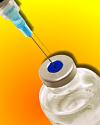
In 2006, the Iowa state ban on the use of thimerosal in almost all vaccines used on children became effective. Iowa passed the law on 14 Apr 2004, and became the first state in the U.S. to enact such restriction. California followed in 26 Aug 2004. State politicians reacted to public concern. Thimerosal contains ethylmercury, a compound of mercury. In other circumstances, mercury is known to be a toxic substance. However, thimerosal had been used in microgram quantities in vaccines to prevent bacterial contamination since the 1930s. On 9 Jul 1999, the Centers for Disease Control and Prevention and the American Academy of Pediatrics, merely as a precaution, asked pharmaceutical companies to discontinue its use in vaccines as soon as possible, though medical evidence was otherwise reassuring.«
Immunization Safety Review: Thimerosal-Containing Vaccines and Neurodevelopmental Disorders, by Immunization Safety Review Committee. - book suggestion.

In 2003, Guyana switched to the metric system as the legal measurement system instead of the imperial system. The change was guided by the National Metrication Committee and the Metrication Division of the Guyana National Bureau of Standards, which was responsible for the public education aspect of the programme and to provide technical support to industry, regulatory bodies, local government, commercial and educational institutions. A legal sub-sector committee effected necessary changes to existing legislations that needed to be converted from imperial units. Guyana is situated in the north-east mainland of South American mainland. It has some ocean coast between Venezuela to the west and Suriname to the east.«
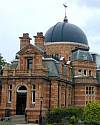
Greenwich Royal Observatory
In 2000, a project for Greenwich Electronic Time—known as GeT—was initiated in Britain for the new millenium, to provide an international standard for all electronic commerce. Timestamps on e-mail messages and e-commerce transactions already used Co-ordinated Universal Time (CUT)—the modern equivalent of Greenwich Mean Time (GMT). Computer software converts CUT to display local time. The intent of GeT was to provide a single digital time standard for worldwide Internet traders and international users just as GMT has helped travellers to keep time since 1884. GeT was advocated by the Interactive Media in Retail Group (IMRG), a European on-line retail body,«
The Royal Observatory Greenwich, by E. Walter Maunder. - book suggestion.
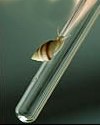
In 1996, the last individual of the snail species Partula turgida (the Polynesian Tree Snail) died at the London Zoo. A protozoan disease of the digestive gland was believed responsible for the extinction of this last specimen. Numerous field surveys failed to find extant populations of this species in the wild (the South Pacific island of Raiatea in the Society Island chain, about 5000-km south of Hawaii). Raiatea residents began importing predatory snails from Florida in 1986 to eat a different pest snail, but the predators attacked the native snails. By 1991 they had driven the species to the brink of extinction. Scientists captured the last known P. turgida individuals to try to save them through captive breeding.«[Image: Polynesian tree snail of a different species in the Partula genus, shown on a test tube for scale]
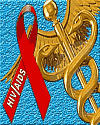
In 1993, a revised definition of AIDS surveillance cases became effective as a requirement for all states in AIDS case reporting. The U.S. Centers for Disease Control (CDC) update expanded the case definition for AIDS among adolescents and adults. The CDC also revised the classification system for HIV infection to greater emphasis to the clinical importance of the count of CD4+ T-lymphocytes, the white blood cells that are the body's master immune cells. As the count falls, the risk and severity of opportunistic illnesses increase. The expansion added three clinical conditions: pulmonary tuberculosis, recurrent pneumonia, and invasive cervical cancer. It retained all the 23 clinical conditions in AIDS case definitions published in 1987. Notably, by adding cervical cancer, more women would be included.«
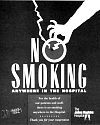
In 1992, from this day, a hospital without a policy of no-smoking indoors would risk losing accreditation by the Joint Commission on Accreditation of Healthcare Organizations (JCAHO). That would put their Medicare and Medicaid reimbursements in jeopardy. The smoke-free environment, mandated for accreditation by the Commission, was for the health of the patients. This was the first U.S. industry-wide ban on smoking in the workplace. Since smoking is the nation's number one cause of preventable disease and death, according to the Centers for Disease Control, this landmark effort removed the contradiction of cigarette smoking and a hospital's mission for health A study showed that by 1994, more than 96% of U.S. hospitals complied with the standard, and 41% were more stringent.«[Image: Graphic from a 1990 poster used at Johns Hopkins Hospital, Baltimore, below which was printed text of their no-smoking policy.]
Smoking Bans, by David Hudson. - book suggestion.

In 1991, the first state in the U.S. to implement electronic highway toll collection was Oklahoma. It was installed on existing toll roads. Drivers with an optional windshield mounted transponder device could pass at highway speeds through designated lanes of toll plazas. An electronic signal activated a system to deduct the appropriate toll from a deposit the driver maintains with the Oklahoma Turnpike Authority. The system was called Pikepass, and was supplied by TransCore of Harrisburg, Pennsylvania. On the same day, cash tolls were increased by 25%. A turnpike authority spokesperson said the existing cost of collecting tolls by hand was 25 cents per transaction, but was expected to be only 10 cents per Pikepass transaction. The state also takes the interest on the money in toll deposit accounts.«
In 1989, the Montreal Protocol, an international agreement (adopted 16 Sep 1987) to reduce the use of ozone-depleting substances, came into force. Ecological and health damage results from a depleted ozone layer as more UV-B radiation can reach the Earth's surface. Results include increased rates of skin cancers and eye cataracts, reduced plant and fishing yields and other adverse effects on terrestrial and ocean ecosystems, weakened immune systems, and more damage to plastics. The international treaty intends to protect the ozone layer by phasing out the production of halogenated hydrocarbon substances believed to be responsible for ozone depletion. It has proved to be a very successful international agreement.«[Image: the largest ozone hole ever recorded, Sep 2000, exposed all the Antarctic and reached the southern tip of Argentina.]

In 1985, AT&T, the American telephone company, divested local operating to seven independent companies, and henceforth was limited to the long-distance market. Thus ended a monopoly that had previously been sanctioned and regulated by the government. This was required by the 1982 settlement of the 1974 U.S. Justice Department antitrust lawsuit. That had resulted from complaints by MCI and other long-distance service providers who, since 1970, had been allowed as limited competition, but were disadvantaged by AT&T having protected standing. AT&T retained its manufacturing of telephone equipment, later spun off as Lucent Technologies. Competition resulted in reduced long-distance rates. Mergers and acquisitions reduced the number of regional operating companies from seven to four.«
The Deal of the Century: The Breakup of At&T, by Steve Coll. - book suggestion.
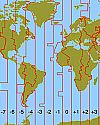
In 1972, Coordinated Universal Time (UTC) was adopted worldwide. UTC is determined from six primary atomic clocks that are coordinated by the International Bureau of Weights and Measures located in France. The abbreviation - UTC - was chosen as an international compromise between the initials of the English language form “coordinated universal time” and the French “temps universel coordonné.” Time zone boundaries as used by nations are drawn according to political considerations. Leap seconds are added to UTC periodically, about once each 18 months, so the highly accurate atomic clock time matches the time measured by Earth's rotation, which is very slightly variable due to tidal forces with the Moon.«[Image: some of the world's time zones shown relative to UTC.]

In 1967, the first fluoridation law in the U.S. went into effect in Connecticut, requiring fluoridation of public water supplies serving 20,000 or more population, to prevent dental caries. The water fluoridation era began in 1945 when the cities of Newburgh, New York, and Grand Rapids, Michigan, began adding sodium fluoride to their public water systems. This followed the work done (1930-1943) by Frederick S. McKay, a Colorado dentist, who related brown stains (mottling) on his patients' teeth to low dental caries due to the source of their drinking water containing high levels of naturally occurring fluoride. By the early 1940s, H. Trendley Dean had determined the ideal level of fluoride in drinking water to reduce decay without mottling.
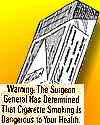
In 1966, effective on this day, all US cigarette packages began carrying the health warning: Caution: Cigarette smoking may be hazardous to your health. This resulted from landmark federal legislation enacted in 1965 that required health warnings on cigarette packages. In 1984, the law was amended to require one of four warning labels in most cigarette-related advertising (U.S. Code, Title 15, Chapter 36, Sec. 1333.)

In 1964, an ordinance banning the open-burning of all materials on land within New York City limits took full effect upon the expiration of the two-year exemption for builders and building wreckers that had been permitted only until 1 Jan 1964, according to the law signed by the Mayor on 30 Nov 1961. The bill, intended to reduce air pollution had already prohibited, effective 1 Jan 1962, the burning of leaves, trees, shrubbery or plants. Health problems would be alleviated by the ban. Persons affected with asthma, emphysema and other respiratory conditions would be able to breathe easier. From 1972, the open burning of household waste was prohibited in New York State for all cities with population over 20,000, and everywhere in the state from 15 Oct 2009.«
The Age of Smoke: Environmental Policy in Germany and the United States, 1880-1970, by Frank Uekoetter and Thomas Dunlap. - book suggestion.
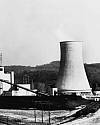
In 1963, the first U.S. electric power plant to use hyperbolic-shaped cooling towers was placed in commercial service at Ashland, Kentucky by the Kentucky Power Company. It was designed to cool 120,000 gallons of water per minute.* The first unit at Big Sandy Plant opened with a 260-megawatt power capacity. The location was chosen to be close to the coal mines that fuel it. In 1969, a second unit opened adding another 800-megawatt of power production. A 320-ft hyperbolic-shaped cooling tower provides a natural draft that cools the water from the power plant's steam condensers at a much lower operating cost than mechanical draft cooling towers. Air enters at the bottom level, which has an open diagonal column structure.[Image: Hyperbolic cooling towers at Big Sandy Plant, 1963, showing coal fuel pile, and train sidings.]

In 1962, an ordinance banning the open-burning of leaves, trees, shrubbery or plants on land within New York City took effect. The action reflected concern over air pollution and its effect on health, and another control against smog. Builders and building wreckers were granted a two-year exemption. The law was signed by the Mayor on 30 Nov 1961. New York State followed this example in 1972, applying the measure state-wide to cities with population over 20,000. Giving increasing attention to air pollution, New York State ended the exemption for smaller communities, and extended the state's ban to everywhere in throughout the state from 15 Oct 2009.«
The Age of Smoke: Environmental Policy in Germany and the United States, 1880-1970, by Frank Uekoetter and Thomas Dunlap. - book suggestion.
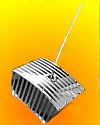
In 1962, the last signals from the OSCAR 1 satellite were received as its non-rechargeable battery failed. The OSCAR 1 (Orbiting Satellite Carrying Amateur Radio) was the first Amateur Radio satellite, launched on 12 Dec 1961, piggy-backed on a Thor-Agena rocket with the primary purpose of deploying military satellite Discoverer-36. On the way, OSCAR 1 was left in an elliptical orbit just above the Earth's atmosphere. It was a mere 11-lb, 9×12×6-in, with a radio transmitting HI in Morse code with 140-mW of power on frequency 114.983-Mz. It transmitted for 312 orbits in 22 days, while its signal was picked up by amateurs in 28 nations. Its low orbit shortly decayed and it burned up in the atmosphere on 31 Jan 1962. (It was little more than four years since Russia launched Sputnik on ; 4 Oct 1957.)«
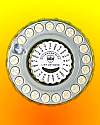
In 1961, Conovid 5mg, from G.D. Searle & Co., became the first oral contraceptive to be sold in Great Britain. A bottle of 20 tablets (retail price of £1 3s. 3d.) was sufficient for daily use during a one month cycle. Chemically, it had 5-mg of the progestogen Norethynodrel in combination with 0.075-mg of the active oestrogen, ethinyl oestradiol-3-methyl-ether. Norethynodrel was the brand name for 17α-ethinyl-17-hydroxy-5(10)-oestren-3-one. These acted to inhibit ovulation by controlling certain secretions. Trials had been made by American researchers Gregory Pincus and John Rock in Puerto Rico, Haiti and the U.S. Later, field tests began in Great Britain on a smaller scale in Mar 1959. Subsequent fertility was found unimpaired; women who withdrew from the trials had normal pregnancies.«[Ref: 'Today's Drugs: Oral Contraceptives',British Medical Journal (4 Mar 1961), 667. Image: pills in a modern calendar package.]
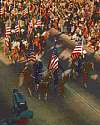
In 1954, the first colour telecast originating from the west coast of the U.S. showed the Tournament of Roses parade hosted by Don Ameche in Pasadena, California. It was viewed by the audiences of the National Broadcasting Corporation (NBC) network in 21 cities (with remaining cities showing the program in black and white). NBC had made the first live colour coast-to-coast live telecast from the east coast two months earlier, on 3 Nov 1953, from its WNBT-TV station (now WNBC) in New York City. It was sent across country to Burbank, California, using radio relay circuits provided by the Bell Telephone Company.*

In 1954, the first colour mobile television units in the U.S. were placed in service by station WNBT of the National Broadcasting Company (NBC) to cover the Tournament of Roses Parade. Two units, each three-colour capable, with complete audio and video control on board, were mobilized aboard large motor vans. Each truck was 35-ft long, 8-ft wide and 10.6 ft high. One camera was crane-mounted. A new logo was introduced to accompany the colour broadcasts. Black and white TV mobile units were already well established for outdoor events, having begun operation on 12 Dec 1937 by the W2XBT station of NBC using a microwave link to a tower transmitter on the Empire State Building.*
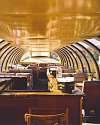

The Hiawatha Story, by Jim Scribbins. - book suggestion.

In 1951, the first pay television in the U.S. started test transmissions to a limited group of subscribers in Chicago, Illinois for 90 days. The broadcast signal was scrambled, and could be viewed by those people having the "key signal" sent to them by telephone. The first day's full-length features, each priced at $1, began in the afternoon with April Showers with Jack Carson, followed by the Bing Crosby movie Welcome Stranger and then Homecoming with Clark Gable and Lana Turner. The service, provided by Zenith Radio Corporation (KS2KSBS), was tested by 300 families chosen from 51,000 applicants. The company sold over 2,000 program views in the first month, yet not enough to sustain the commercial venture.*
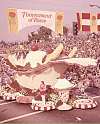
1971
In 1948, the first U.S. motion picture newsreel in colour was taken at the Tournament of Roses and the Rose Bowl Game, Pasadena, California. Warner Brothers-Pathe started showing this first colour newsreel to theatre audiences on 5 Jan 1948. It was made using the Cinecolor process.*

In 1948, nationalization of the railways in Britain formed British Railways from the four private companies: LMS (London, Midland and Scottish), LNER (London and North Eastern Railway), the Southern and the Great Western. The Big Four companies had been privately owned and operating since 1 Jan 1923 as compulsory amalgamations of over one hundred smaller Victorian railway companies. The nationalization was implemented by the post-war Labour government. During WW II, the railway assets had deteriorated and there was a huge backlog of necessary repairs to the track, locomotives and rolling stock. In the early 1960s, the Conservative government required the closure of branch lines that were no longer economically justified. These drastic changes were effected by Dr. Richard Beeching.«[Image: British Railways Coat of Arms 1948-56.]
The Oxford Companion to British Railway History, by Jack Simmons and Gordon Biddle. - book suggestion.
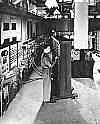
In 1946, ENIAC, the first U.S. computer was finished by John Mauchly and J. Presper Eckert. It was built at the Moore School of Engineering, University of Pennsylvania, Philadelphia, based on ideas developed by John Atanasoff of Iowa State College. Though not the first ever computer, ENIAC is regarded as the first successful, general digital computer. It weighed over 27,000 kg (60,000 lb), and contained more than 18,000 vacuum tubes. A staff of six technicians replaced about 2000 of the tubes each month. Many of ENIAC's first tasks were for military purposes, such as calculating ballistic firing tables and designing atomic weapons. Since ENIAC was initially not a stored program machine, it had to be reprogrammed for each task.
ENIAC: The Triumphs and Tragedies of the World's First Computer, by Scott McCartney. - book suggestion.
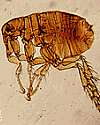
In 1939, a Flea Laboratory opened in San Francisco, California at the University of California's Hooper Foundation for Medical Research. It was the first of its kind in the U.S. The building was a two story concrete structure designed to be flea-tight, and rodent-tight. Air-conditioning kept the interior at a constant temperature. This event came a century after fleas first made a name for themselves. The first U.S. flea circus opened in early Jan 1838, which was billed as an "Extraordinary Exhibition of the Industrious Fleas." Patrons at 187 Broadway, New York City, for an admission of 50 cents, could attend performances at times from 11am to 3pm and 5pm to 9pm.*
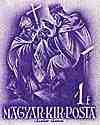
In 1938, the scholarly Gerbert, who became Pope Sylvester II was shown on a postage stamp issued by Hungary. It depicted Pope Sylvester II giving to Abbott Astrik the Holy Crown with which King Stephen I (975-1038) was crowned on 17 Aug 1001, at Gran, his birthplace. The gift signalled the Pope answering the king's petition, through Astrik, to make Hungary a Christian nation. The stamp was on in a series of eight that commemorated the 900th anniversary of the death of St. Stephen. Pope Sylvester II is known as the mathematician Pope. Before becoming pope in 999, Gerbert d'Aurillac was a scholar in mathematics and astronomy. He reintroduced the abacus to facilitate calculations. He brought to Europe the use of Arabic numerals 1-9 to replace Roman numerals.«
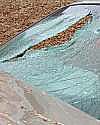
In 1937, in Britain, safety glass for windscreens was made mandatory in new vehicle manufacturing. It was known that in car accidents, ordinary glass would break into dangerous, jagged blades. Safety glass was made as a sandwich of clear, flexible plastic laminated between two layers of glass. When French artist and chemist Édouard Bénédictus first patented safety glass in 1909, the choice of plastic was limited to a sheet of clear celluloid. He discovered the idea by accident in 1903. During WW I, it was used in the eyepieces of gas masks. By 1936, others plastics had become available, of which polyvinyl butyral (PVB) was adopted because of its strength and ability to stretch making it the most safe and effective to use. Such safety glass when struck could merely bulge, or break into less harmful pieces.«[Image: modern safety glass in a windshield split, but not into dangerous shards, by the passenger's head when the car crashed into a large tree.]
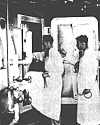
Altitude chamber 1939
In 1937, at the physiological research facility at Wright Field, Dayton, Ohio, outfitting was completed, and it was ready to undertake its first work. It was the first of its kind in America. The U.S. Air Corps now had a laboratory to improve health and safety for pilots. The first effort was a series of animal experiments to gather baseline physiological data on hypoxia, and the effects of explosive decompression. The Physiological Research Unit was established 18 May 1935 with Capt. Harry G. Armstrong as the director. Later, here, the first centrifuge in the U.S. allowed scientists to investigate the physiological effects of G-forces on humans. The design of modern pressurized aircraft is a result of work done here. On 10 Feb 1939, the unit was renamed the Aeromedical Research Laboratory.«
50 Years of Research on Man in Flight, by Charles A Dempsey. - book suggestion.
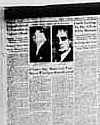
In 1936, the Herald Tribune of New York began microfilming its current issues from this date, becoming the first U.S. newspaper to make a current record of its publication. The previous year the New York Times had microfilmed its back-issues for the years 1914-27, but had not yet started processing its current issues in this form.* [Image: microfilm image of a 1934 issue of the Herald Tribune]

In 1935, Wirephoto™ by AP News® was invented. It enabled the transmission of photographs by wire to member newspapers. The photo was wrapped around a drum. The drum was then rotated as a light-sensitive photocell moved over the image picking up brightness differences. The photocell created voltages that were amplified and sent by telephone lines to the subscribing newspapers. At the receiving end, a piece of photographic paper spun around on a cylinder within a light-tight enclosure. The intensity of a pinpoint of light focused on the paper varied with the signal being picked up by the originating machine. The paper was then processed in a darkroom in the same way as a normal photographic print.*
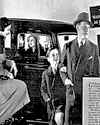
In 1934, a state law took effect mandating the used of safety glass for windshields and windows in new vehicles registered in Pennsylvania. Similar laws took effect on 1 Jan 1935 in the American states of New York, Virginia and Nebraska. In On 1 Jan 1936, vehicles registered in California, Massachusetts, North Carolina and Wisconsin were covered in the same way by their state's law. Major car manufacturers were already aware of the importance of safety glass in accidents, and had already for some years adopted its use in their vehicles. Magazine advertisements also offered consumers safety glass retrofits to protect the family riding in an older car. In a 1934 ad for Duplate Safety Plate Glass, by the Pittsburgh Plate Glass Company, a cost range was given as $7.50 to $20 depending on the car model.«
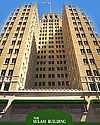
In 1928, the first high-rise office building in the world with air-conditioning installed during construction - the Milam Building - opened in San Antonio, Texas. The 21-story building has almost 250,000 square feet of floor area. The air-conditioning was designed by the Carrier Engineering Corporation to provide 300 tons of refrigeration capacity with chilled water, piped to air-handling fans serving all floors. Smaller buildings such as stores and theatres already had air conditioning installed, but the high-rise required preparing in advance the design to incorporate ducts and air-handling and control equipment planned with the structure. At the time it opened, it was also the tallest brick and concrete-reinforced structure in the United States.*
Air-Conditioning America: Engineers and the Controlled Environment, 1900-1960, by Gail Cooper. - book suggestion.
In 1927, Turkey adopted the use of the Gregorian Calendar. This day followed immediately after 18 Dec on the Julian calendar. The 13 intermediate dates were skipped, so in Turkey the month of December had on 18 days in 1927.
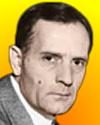
Hubble
Edwin Hubble, The Discoverer of the Big Bang Universe, by Aleksandr Sergeevich Sharov, Igor Dmitrievich Novikov. - book suggestion.
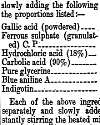
(USPTO)
In 1924, the first U.S.patent for ink paste was issued to Frank Buckley Cooney of Minneapolis, Minn. (No. 1,479,533). Paste ink was designed to be rendered fluid for use by the addition of water, so that “a very satisfactory writing fluid is provided free of suspended matter and other imperfections.” Thus ink could be packaged in a collapsible lead vending tube in highly concentrated form. This also had the benefit of reducing shipping costs. Four fluid ounces of paste would produce one gallon of ink after dilution, free from the suspended matter associated with concentrated ink in the form of powders or tablets. It was manufactured as Cooney's Ink Paste, from 10 Feb 1923, by the Standard Ink Co in the same city.
In 1923, the 123 British private railway companies merged into just the “Big Four” giant regional companies. Thus were formed the London, Midland & Scottish, London & North Eastern, Great Western and Southern railways as privately owned monopolies. During WW I, all railways were placed under state control (but not ownership) and while the Railway Executive Committee prioritized war transportation needs, assets deteriorated. After the war, the benefits of central management to end destructive competition suggested nationalization for recovery. This was rejected in 1919. Instead, the Railways Act of 1921 imposed the Big Four amalgamations as private companies, effective 1 Jan 1923. Freight rates control was introduced. Nationalization came on 1 Jan 1948 after state control during WW II.«
The Oxford Companion to British Railway History, by Jack Simmons and Gordon Biddle. - book suggestion.
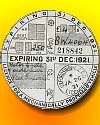
In 1921, car tax discs and licence registration books were introduced in Great Britain. The serially numbered discs, about 3-in (75mm) diam, were a receipt, or vehicle licence card showing that the excise duty (introduced 1 Jan 1889) had been paid for the vehicle. The tax amount varied with class of vehicle and horsepower (£1 per h.p. for cars). The licence could be for a quarter or year. The tax was pro-rated if paid part-way through the year, or quarter. The details of the specific vehicle were written in provided spaces on the disc, which also showed the expiration date. It had to be displayed in the “regulation position” (windscreen for a car) when the “mechanically propelled” vehicle was in use on a public road. They were issued at a Post Office, and initially, any expiring one had to be turned in to obtain a new one.«
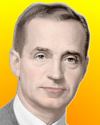
Edsel Ford
In 1919, Edsel Ford became president of the Ford Motor company, taking over from his father, Henry Ford. They become sole owners of the company by purchasing stock of the other shareholders. The company incorporation paperwork had been signed on 16 Jun 1903, and sold its first Model A on 23 Jul 1903. After Edsel died at age 49 on 26 May 1943, Henry Ford was re-elected President of the company for about two more years (He died 7 Apr 1947). On 21 Sep 1945, Edsel Ford's son, Henry Ford II, was named president of the company, and he held that position until 9 Nov 1960 when he instead became the company CEO. Henry Ford II retired as CEO on 1 Oct 1979. (He was also Chairman from 13 Jul 1960 to 1980). Henry Ford II died on 29 Sep 1987.«
My Life and Work, by Henry Ford. - book suggestion.
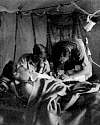
WWII
In 1916, blood that had been stored and cooled was used for the first time in a blood transfusion performed by the R.A.M.C. The procedure was very successful. Blood transfusions had been made previously, but this demonstrated the value of cooling to store blood. Until 1913, direct transfusion was the only technique practiced, despite being a difficult and time-consuming method, requiring trained personnel and was impractical for as a procedure in sudden emergencies. In the last two years of World War I, British surgeons benefitted from knowledge derived in the U.S. Use of blood collected and stored in advance of the need as casualties arrived facilitated transfusions as needed.[Image: blood transfusion was a mature procedure to treat casualties in World War II]
Blood: An Epic History of Medicine and Commerce, by Douglas Starr. - book suggestion.
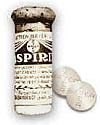
In 1915, Aspirin was made available for the first time in tablet form. The pills were manufactured by Bayer pharmaceuticals in Germany. The medicine had previously been sold in powder form from 1 May 1899. Salicin, the parent compound of the salicylate drug family had been isolated from willow bark in 1829. From 1875, sodium salicylate was used as a commercial pain reliever, despite side effects such as bleeding of the stomach lining. On 10 Aug 1897, a German chemist, Felix Hoffmann, working at the Bayer company, found a suitable, less acidic medication, acetylsalicylic acid. It was marketed by Bayer under the “Aspirin” trademark. It has since become the biggest selling drug in the world as an analgesic (anti-pain), anti-inflammatory, and antipyretic (fever-reducer).
Aspirin: The Remarkable Story of a Wonder Drug, by Diarmuid Jeffreys. - book suggestion.
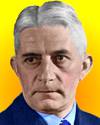
In 1914, Wolfgang Köhler became director of the Prussian Anthropological Research Station on Tenerife in the Canary Islands, the first primate laboratory to specialize in behavioral research. It had financial support from the Prussian Academy of Sciences. He began studies of chimpanzees, though he lacked experience in animal research.. He had arrived in Dec 1913 to take up a one year the appointment after Eugen Teuber. Eight months later WW I began. As a German, he was isolated on the Spanish island because the area was patrolled by the British Navy protecting shipping lanes. He remained until the station was closed in 1920. His famous work focussed on showing that chimpanzees had intelligence to act with insight, not just blind trial and error, and manipulated implements with a purpose.«
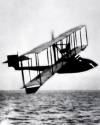
Benoist airboat
In 1914, the first U.S. commercial hydroplane service began in Florida between St. Petersburg and Tampa. The inaugural flight was marked by a parade, a band, and a crowd of about 3,000 people. The St. Petersburg-Tampa Airboat Line offered two flights in each direction daily, at $5 fare each way. The flight traveled 18 miles in about 23 minutes, mostly following the Tampa Bay coast, and at an elevation of 80 feet when crossing the open water of Tampa Bay. It saved considerable time; the alternative was a 2½-hour trip by steamship, or 12 hours by train. Hence, it was ideal for an airplane service. It was the idea of Percival Elliot Fansler (a sales representative for diesel engines for fishing boats) who teamed with Thomas W. Benoist's company manufacturing the airboats and providing pilots.«
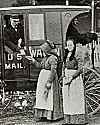
In 1913, the U.S. Post Office Department offered parcel delivery. Prior to this service, private companies handled package deliveries, but too many small towns were left unserved by private carriers as too unprofitable. Previously, many rural residents had to travel for days to retrieve their mail from distant post offices. As soon as the new Parcel Post service began, it was an instant success. Within the first five days, 1,594 post offices handled over 4 million parcels. It was a great stimulus to mail-order marketing, and boosted the national economy. Rural Americans received deliveries of produce (even eggs), medicines, dry goods, and a large variety of commodities were made more easily available from farmers and merchants.«
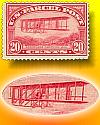
In 1913, the world’s first stamp to depict an airplane (a biplane) went on sale at U.S. Post Offices. (It was issued two weeks earlier, on 16 Dec 1912, six years prior to the first U.S. airmail stamps.) It was a 20-cent Parcel Post stamp, with carmine rose red ink, titled “Aeroplane Carrying Mail,” part of a series of 12 stamps for use on parcel post. On 24 Aug 1912, Congress had authorized the U.S. Post Office to enter the parcel post business to improve service for rural areas poorly served by private delivery companies. Four stamps in the series showed workers (including 3c. “Railway Postal Clerk,” 4c. “Rural Carrier” in a horse-drawn wagon). Four more had transportation methods (including a 5c. “Mail Train,” 10c. “Steamship and Mail Tender,” 15c.“Automobile Service”), and others showed industries.«
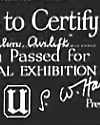
In 1913, in Great Britain, the country's first national film censorship began. To avoid formal central government censorship, the film industry formed the British Board of Film Censorship, to be a self-censoring body. Though with no legal status, it did have the approval of the Home Secretary, Reginald McKenna. It had a part-time president, full-time secretary and four censors. To remain independent, the BBFC operated from fees, based on length, of submitted films. The BBFC rated its content. with either an A (adult) or a U (universal) certificate, or reject it. The first film rated U was Mary of Briarwood Dell, and the first A was A Strong Man's Love. The first purpose-built cinema in Britain opened in 1906, but by 1910 there were about 1600, and by 1916 silent films were being exhibited at 3,500 cinemas.«[Image: Detail from an early BBFC certificate, which was shown as a leader for the film.]
The Hidden Cinema: British Film Censorship in Action, 1913-1975, by James Crighton Robertson. - book suggestion.
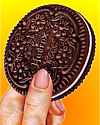
In 1910, the Hydrox “biscuit bonbon,” a chocolate sandwich cookie with creme filling, was introduced in the U.S., the first of its type in America. (Biscuit is the English word for what Americans call a cookie.) This sandwich cookie was introduced by Jacob Leander Loose of the Loose-Wiles Biscuit Company of Kansas City, Kansas, which was later known as Sunshine Biscuits. A couple of years later, a familiar American brand with a similar product, the Oreo cookie, was designed by William Turner of the National Biscuit Company (later Nabisco). That was first introduced on 6 Mar 1912, as the Oreo Biscuit, but renamed as the Oreo Creme Sandwich in 1948.«
In 1910, a list of 16 pilots holding licences to fly powered aircraft was published by the Aero Club of France. These were the world's first pilot licence holders. Without a test, they were for those who had actually flown by Dec 1909. By oversight, Charles Voisin was not on the list, although he had made France's first officially recognised powered flight. The licence issued to Henry Farmer, was the first issued to a British pilot, and was back-dated to 7 Jan 1908. Some names on the list were challenged as people that had never flown. Subsequently, the Club's flying test was required to obtain a licence. The first to take the test was Alfred LeBlanc, who was issed Brevet No. 17. In Britain, the Royal Aero Club began issuing licences on 8 Mar 1910. The first licence by the Aero Club of America was issued on 8 Jun 1911.«*
In 1909, London newspapers quoted astronomers about a possible trans-Neptunian planet. The solar physics observatory at South Kensington cited photographic evidence received from Prof. Pickering of Harvard Observatory. After the discoveries of Uranus (1781) and Neptune (1846), the latter had been regarded as the outermost planet. Now Pickering's graphical analysis suggested a ninth planet, as various phenomena seemed to indicate a disturbing factor that could possible be another planet of considerable size beyond Neptune. In the previous decade or so, several astronomer/mathematicians had published their speculations of distant planets. Pickering became the most prolific. In the period 1908 to 1932, he proposed seven hypothetical planets. The claims were never substantiated.«
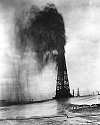
In 1909, drilling began on Lakeview No. 1 oil well, two miles north of Maricopa in Kern County, California. After a series of delays from drilling problems, it finally struck oil on 15 Mar 1910. The extreme gas pressure in the oil pocket spewed oil sometimes over a hundred feet into the air in an out-of-control gusher. As an oil spill, it far exceeded the Gulf of Mexico oil spill of 2010. The historic Lakeview gusher flowed for 18 months, beginning at 18,800 barrels a day and peaking at 90,000 barrels a day. Technology of the era was inadequate to control the well, but the river of oil was contained by crews building earthen dams. Fortunately the oil never caught fire. Enough of the oil was recovered for sale that oil prices plummeted. Eventually the flow was ended by a natural collapse of the bore hole on 10 Sep 1911.«
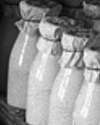
In 1909, the milk pasteurization law took effect in Chicago, Illinois, which in Jul 1908 had become the first American city to pass such a law. From now, any milk sold in the city was required to have been pasteurised, or must be from cows that had been tuberculin tested. The health initiative, to prevent the spread of tuberculosis and other diseases, had been urged by William A. Evans, the city's Health Commissioner. However, many local dairies fought the law. It was repealed in 1910 after the courts ruled the measure interfered with free trade. But in 1911, both the National Commission on Milk Standards and the American Medical Association issued reports supporting health protection by pasteurizing milk. Public support grew, and in 1912, Chicago passed a second pasteurization ordinance which held.«
The Untold Story of Milk, by Ron Schmid. - book suggestion.
In 1906, in British India, all the railway and telegraph clocks were put at Indian Standard Time. India implemented their international standard time zone based on the 1905 decision for the Indian Time Meridian. It was set as the meridian passing through Allahabad at 82.5° east of the Greenwich Meridian longitude. The country had a single time zone, IST, at 5 hours and 30 minutes in advance of GMT. This was about 9 minutes faster than Madras time, and about 24 min slower than Calcutta time. (Railway Time had been in use since 1 Jan 1888 using Madras time.) However, Calcutta and adjoining areas, until 1948, kept a separate time zone, Calcutta LMT (Local Mean Time). Pakistan kept IST for three years after its partition, then in 1951 introduced Pakistan Standard Time at 5 hours ahead of GMT.«
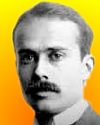
Beers
In 1905, Clifford Beers (1876-1943) commenced his autobiography that became a classic for mental health professionals. As he recorded in his finished book, A Mind That Found Itself, “I began to write. Within two days I had written about fifteen thousand words—for the most part on the subject of reforms and how to effect them.” He had already himself experienced treatment as a mental patient, and he wished to document the appalling conditions and maltreatment by staff in asylums. His unsettled elation upon beginning the work caused his brother to have him committed again, temporarily, to an institution. When the book was eventually published (Mar 1908), he raised the public consciousness and indeed prompted reform in the care of mental patients. By 1921, it had five editions.«
The Mind That Found Itself, by Clifford Beers. - book suggestion.
In 1904, the Motor Car Act 1903 came into force in Britain, requiring the registration of motor vehicles with the local council. A motor car licence cost £1, a motor cycle licence cost 5 shillings, and the vehicles were to display registration marks in a prominent position. The first registration marks consisted of one letter and one number. The first (A1) was issued by London County Council. Driving licences were introduced, on sale for five shillings at a Post Office, though no driving test was required at this time. The Act also raised the speed limit to 20mph (or 10mph by the Local Government Boards), and introduced heavy fines for speeding and reckless driving. Fines were also introduced for driving unlicensed vehicles.«

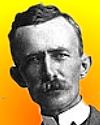
In 1902, the first radio broadcast demonstration in the U.S. was given by Nathan B. Stubblefield. His voice was the first to be carried on the air-waves ("wireless" - without any wires used for the transmission). At Fairmont Park, Philadelphia, he gave a public exhibition in which he transmitted his voice to a receiver a mile distant from the transmitter. He kept the details of the invention secret until he was issued a patent (U.S. No. 887,357) and gave another demonstration on 30 May 1902. He was unable to obtain a suitable buyer for his invention, thus no distribution, and received little notice for being the first to have accomplished a voice radio broadcast.*
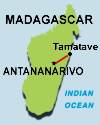
In 1901, a purpose-build road intended for motor-vehicle traffic was completed in Madagascar. It enabled motor freight vehiles to travel between the east coast port town of Tamatave and the capital city Antananarivo. It was the idea of the colonial governor, Joseph S. Gallieni who had the 140-mile (220-km) highway constructed by French engineers, and freed slaves, taking three years and a cost of 9 million francs. Manpower was available because on 27 Sep 1896 the French officially abolished slavery in Madagascar. Although designed to be functional for motor vehicles, it was used extensively by ox or mule carts, rickshaws palanquin and hand carts. Communications in general were being improved. Telegraph lines were being extended, and a railway was under construction.
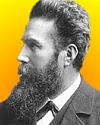
In 1896, German scientist, Wilhelm Röntgen announced his discovery of X-rays. He sent copies of his manuscript and some of his X-ray photographs to several renowned physicists and friends, including Lord Kelvin in Glasgow and Henri Poincaré in Paris. Four days later, on 5 Jan 1896, Die Presse published the news in a front-page article which described the discovery and suggested new methods of medical diagnoses might be made with this new kind of radiation. One day later, the London Standard cabled the news to other countries around the world about the “a light which for the purpose of photography will penetrate wood, flesh, cloth, and most other organic substances.” It printed the first English-language account the next day.
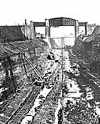
1890

100 Years of the Manchester Ship Canal, by T. Gray. - book suggestion.
In 1889, the University of Pennsylvania became the first U.S. university to have a professor of psychology with the appointment of James McKeen Cattell as the first academic to have the title in that field.
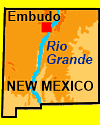
In 1889, the first U.S. Geological Survey streamgage became operational. The location used was on the Rio Grande river, adjacent to the railroad station for the nearby town of Embudo, New Mexico. It was established during the first USGS training camp for 14 student hydrographers (Dec 1888-Apr 1889). The trainees formed a “small body of men of good education and high general intelligence,” who lived in a tent camp. The USGS now collects streamgage measurements at 8,000 sites across the nation. This data is used to understand the nation’s water resources, to forecast floods and droughts, manage flood flows, deliver water supplies, establish water rights and protect threatened aquatic habitats.«map background=netstate.com/states/geography/mapcom/nm_mapscom.htm
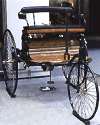
In 1889, a motor vehicle excise tax took effect in Great Britain, for the first time in that country, authorized by the Customs and Inland Revenue Act 1888. It was a tax based on vehicle ownership (tax on fuel began in 1909). The two guineas* annual duty was designated for road building and maintenance. The Act applied to vehicles defined as having “four or more wheels” and “drawn or adapted or fitted to be drawn by two or more mules, or shall be drawn or propelled by mechanical power.” Thus Parliament anticipated the growth of motor car use in Britain by the mid 1890s. By 1896, vehicles over 1 ton weight paid a higher duty, 3 guineas, as part of the Locomotives on Highways Act 1896, which also regulated their use and speed. The Motor Car Act 1903 added more regulations.«[*1 guinea = £1.1s.0d. Image: 1886 Benz car, first gasoline-powered car, shows how new such cars still were by the time the tax was enacted. Steam-powered vehicles were in use earlier.]
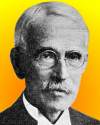
Chapin
In 1888, the first municipal health laboratory in the U.S. was established in Providence, Rhode Island. It was run by Dr Charles V. Chapin, a pioneer epidemiologist, assisted by Dr Gardner T. Swarts as the Medical Inspector. (It was preceded by some experimental work in the previous month.) The lab's primary purpose was the analysis of food and water, but when spurred by a typhoid epidemic, it turned to the study of micro-organisms. Chapin was was one of the first people to recognize the link between spread of contagious disease and people living in filth—such persons use very little soap and water and allow their faces, hands, belongings and dwellings to become and remain smeared with mucus, saliva, pus and other infectious material.
a pioneer epidemiologist, assisted by Dr Gardner T. Swarts as the Medical Inspector. (It was preceded by some experimental work in the previous month.) The lab's primary purpose was the analysis of food and water, but when spurred by a typhoid epidemic, it turned to the study of micro-organisms. Chapin was was one of the first people to recognize the link between spread of contagious disease and people living in filth—such persons use very little soap and water and allow their faces, hands, belongings and dwellings to become and remain smeared with mucus, saliva, pus and other infectious material.
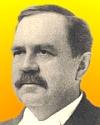
Atwater
In 1876, work began at the first regularly organized state agricultural experimental station in the U.S. It was located in Middleton, Connecticut, having been approved 20 Jul 1875, with an appropriation of $2,800 being approved 1 Oct 1865. The first director was Wilbur Olin Atwater, who served until 9 Apr 1877. Assistance had been offered in the form of $1,000 from Orange Judd, owner of the American Agriculturist, and the free use of the chemical laboratory of Orange Judd Hall at Wesleyan University at Middletown was provided by its trustees.* Important discoveries have come out of research at the station, including vitamin A (in 1913), hybrid corn, the first soil fungicide (1889) and a fungus to control gypsy moth populations.
who served until 9 Apr 1877. Assistance had been offered in the form of $1,000 from Orange Judd, owner of the American Agriculturist, and the free use of the chemical laboratory of Orange Judd Hall at Wesleyan University at Middletown was provided by its trustees.* Important discoveries have come out of research at the station, including vitamin A (in 1913), hybrid corn, the first soil fungicide (1889) and a fungus to control gypsy moth populations.
In 1873, the Gregorian calendar was introduced in Japan to supplement the traditional Lunisolar Japanese calendar in use since the 7th century. From 1876, the new year begins January as the First Month. However, the co-existing Japanese Emperor Era (known as nengô) uses a year number that relates to the era of an Emperor's reign. The months are referred to by number, without names. For example, 1 Jan 2000 is the beginning of the year Heisei 12, and the month is merely known as the First Month. This system is still current, along with the Western Anno Domini (A.D.) or Common Era (C.E.) system.«
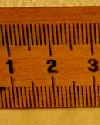
In 1872, the metric system was officially introduced in the German empire. A law published on 17 Aug 1868 made the use of metric weights and measures permissive from 1 Jan 1870, becoming compulsory two years later. (The first country to establish the metric system was France on 7 Apr 1795. A committee from the French Academy used a decimal system and defined the meter to be one 10-millionths of the distance from the equator to the Earth's Pole. For the metric unit of mass, the gram was defined as the mass of one cubic centimeter of pure water at a given temperature.) By act Congress, the use of the metric system was legalized in the U.S. (28 Jul 1866), but was not made obligatory. On 20 May 1875, the Treaty of the Meter was signed by 17 countries, including the United States, at the International Metric Convention.*
The Measure of All Things: The Seven-Year Odyssey and Hidden Error That Transformed the World, by Ken Alder. - book suggestion.
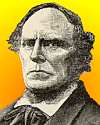
Miles Greenwood

A later Latta fire engine
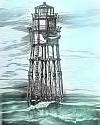
In 1850, the lamp was lit at the first iron pile lighthouse in the U.S. built on Minot's Ledge, Mass., just outside the Boston Harbor. The loss of 40 ships there in 1832-41, showed a light was badly needed. Some favored a granite tower like England's famed Eddystone Light, but Capt. William H. Swift of the Topographical Department, who planned the lighthouse, chose an iron pile tower (an open, spidery structure drilled into the rock) as more practical to build on the mostly submerged ledge. Built for about $39,000 in 1847-49, it was the first lighthouse in the U.S. to be exposed to the ocean's full fury. It was feared to be unsafe by its keepers, who reported it swayed badly in storms. The structure was swept away in a great gale on 16 Apr 1851.*
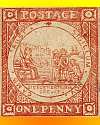

detail
The World of Classic Stamps: 1840-1870, by James A. MacKay. - book suggestion.
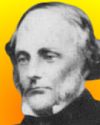
Duncan
In 1847, the first British Medical Officer of Health was appointed, Dr William Duncan, in Liverpool. The city had grown too rapidly as a port city, where commercial gain was pursued without regard to the overcrowded, insanitary conditions in which the increasing numbers of workers lived. Duncan realized such problems created epidemics of diseases such as cholera, smallpox and typhus. His 1843 pamphlet, The Physical Causes of the High Mortality Rate in Liverpool, raised these issues as reasons the mortality rate in the city far exceeded other towns. He was a of pioneer in the Victorian public health movement. He used the power of the media to spread public health messages, by holding weekly press conferences to keep a focus on public health and to advocate change.«
The Great Filth: The War Against Disease in Victorian England, by Stephen Halliday. - book suggestion.
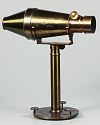
In 1841, Austrian inventor Friedrich Voigtländer began selling the world's first purpose-built portrait camera. Since a person wanting a portrait would have to hold a pose for the time required for a successful exposure, it was critically important to be able to do that in the shortest time—which depends on the lens. Voigtländer incorporated a rapid double-combination lens designed according to the calculations of Viennese mathematician Josef Max Petzval. What used to take 20-30 minutes could now be done in two. The brass-bodied camera was shaped somewhat like a Lava Lamp bottle on its side. It made circular daguerreotypes about 3½-in (9cm) diam. The Voigtländer family business was started by his father in Vienna in 1756, making scientific instruments.«
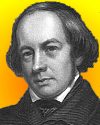
Kane
In 1833, Robert Kane, a 24-year-old Irish chemist, published a paper in which he was the first to propose the existence of the -C2H5 ethyl radical (Dublin Journal of Medical and Chemical Sciences, which he founded). His idea was initially "a subject of amusement and ridicule among the chemical circles" of Dublin. A year later, when similar ideas were proposed by Justus Liebig, the authority of that great German chemist gave credibility to the concept, and Kane eventually received the credit for it. By the age of 22, he had already written a book, Elements of Practical Pharmacy, and was a professor of chemistry at Dublin's Apothecaries' Hall. His research spanned inorganic, organic, physical, biological and applied chemistry.«
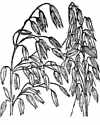
Title from Vol. 1, No. 1
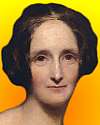
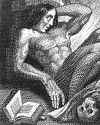
Frankenstein from frontispiece 1831
In 1806, this was the first day the French returned to using the Gregorian calendar, having used a Republican calendar for about a dozen years following the French Revolution. That had been required for civil registration and government records throughout France and other areas under French rule, such as modern Belgium, Luxembourg, Egypt, Malta, Louisiana and elsewhere. The new Emperor Napoleon Bonaparte abolished that “Calendar of Reason,” and its decimal form of counting days, hours and minutes. Prior to the French Revolution, the country had used the Gregorian calendar for more than two centuries since shortly after the decree by Pope Gregory XIII . France had stopped using the Julian calendar after 9 Dec 1582.«
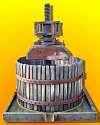
In 1802, a mammoth cheese was presented to President Thomas Jefferson at the White House. In summer 1801, Rev. John Leland urged the ladies of his church in Cheshire, Massachusetts to produce a mammoth cheese to give to the president to recognize his support of religious liberty. The local farmers thus established the first U.S. cheese factory cooperative to make it, using the milk curds of 900 cows. The cheese was pressed in a six-foot diameter modified cider press on 20 Jul 1801 at the farm of Elisha Brown, Jr. A motto was engraved on it: “Rebellion to tyrants is obedience to God.” By 20 Aug 1801, its weight was 1,235-lb. In late Nov, it was transported to the Hudson River to travel by boat to Baltimore, then to the White House on a six-horse wagon. Jefferson wrote that it was 4-ft 4½-in diam., 15-in thick.«[Image (unrelated; for concept only): French cider press.]
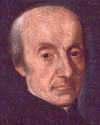
Piazzi
In 1801, Italian astronomer, Giuseppe Piazzi of Palermo, discovered the first and largest asteroid, 1 Ceres, between the orbits of Mars and Jupiter. After only 41 possible days of observation, he lost it in the sun after 11 Feb 1801. He proposed the name Ceres Ferdinandea, in honour of Sicily's patron Roman goddess, and his patron, the king. Its diameter is about 960 km (600 miles), and it revolves around the Sun in 4.6 yrs. This sighting followed that of the planet Uranus (1781) by British astronomer William Herschel. Piazzi's discovery provided a body between the orbit of Mars and Jupiter fitting the so-called “Titius-Bode's law.” German astronomer Johann Olbers later found more of these bodies now called “asteroids” or “minor bodies of Solar System.” Over a thousand such objects are now known.
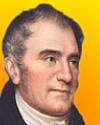
In 1800, E.I. du Pont, who became a chemical industrialist, arrived in Newport, Rhode Island, age 28, immigrating to the U.S. from France. He brought twelve more family members, including his wife and three children. While Thomas Jefferson was serving as minister to France, DuPont's father became acquainted with him, which may have influenced the family's decision where to migrate after the father found the post-Revolution government unacceptable. In 1788, Éleuthère Irénée du Pont had begun working for the French chemist Antoine Lavoisier, who was then chief of the royal powder works, and became his assistant in 1791. Thus Du Pont had the knowledge to establish his own powder mill at Wilmington, Delaware (1803). From this start followed diversification and the growth of a great chemical industry.«
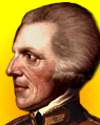
Count Rumford
In 1790, accompanied by officers of the garrison and of the city, Sir Benjamin Thompson, in the service of the Elector of Bavaria, went into the streets of Munich and rounded up all the beggars and took them to a military workhouse set up for the purpose. A large unoccupied factory had been prepared for the employment and residence of these 2,600 people. The scourge of beggars in the streets was resolved, while providing them gainful employment. The first work program was to make clothing for the Bavarian army. Thompson (who became Count Rumford) thus had motivation and opportunity at the factory for experiments and inventions related to improving fireplaces, chimneys, kitchens and cooking. He eventually engaged in historic research into the conversion of mechanical energy into heat.«
Count Rumford on the Nature of Heat, by Benjamin Rumford. - book suggestion.
In 1788, in London, John Walter changed the name of his newspaper, the Daily Universal Register. On this date, he published the first edition of The Times. He had been a Lloyd’s underwriter until 1785 when, nearing bankruptcy, he ventured into the newspaper business. This new career resulted from having bought a patent in 1782 for logotypes, which were common words cast as one piece of type to improve the typesetting process. His first edition of the Daily Universal Register on 1 Jan 1785 was intended as a daily advertising sheet with which he could also promote his logography. It included parliamentary reports and foreign news, and produced income from advertisers. After three years’ experience, he changed the name of the newspaper at the same time he revised the type of the content.«
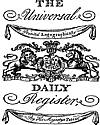
In 1785, the first edition of the newspaper The Daily Universal Register was published in London. It cost two-pence halfpenny, and its masthead declared. that it was “Printed Logographically.” On 1 Jan 1788, the newspaper's name was changed to become The Times, by which it has been known to the present day. The original 1785 crest with lion, unicorn and motto, “Dieu et mon droit” remains the centerpiece of the masthead, much the same, although redrawn. The front page had no banner headlines, but had four columns of advertisements and announcements in small, dense type.[Image: graphic elements from the newspaper mastead, here re-arranged vertically.]
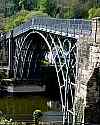
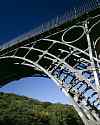
The Iron Bridge: Symbol of the Industrial Revolution, by Neil Cossons and Barrie Trinder. - book suggestion.

Bernoulii
In 1697, Johann Bernoulli dated a printed “Programma” addressed “To the sharpest mathematicians now flourishing throughout the world, greetings...” He included two challenge problems, “calculated to rouse noble minds to attempt work conductive to the increase of knowledge... [with] problems at once difficult and useful, the solving of which ... the most eminent analysts of this age ... apply their powers,” and notify Bernoulli who would publish a solution received for public credit. One challenge was the brachistochrone problem. Isaac Newton recieved a copy on 29 Jan 1696/7*, and promptly solved it the same day. He sent his solution to the Royal Society—anonymously. When Bernoulli read it he shrewdly guessed it was Newton's work. By legend, he exclaimed, “I recognize the lion by his paw!”[*Newton received the letter on the Julian date in England of 29 Jan 1696/7, which was 8 Feb 1697 on the Gregorian calendar in use in France. The Julian date has a slash with the year because of another quirk of the calendars of the time, whereby because the English civil new year began on 25 Mar, and the year would not increment until that day, and not on 1 Jan. Hence dates between 1 Jan and 24 Mar have an ambiguous year. So Newton received the letter in Jan of the Historical Year of 1697, but it was still the 1696 Civil Year, using the days of the Julian calendar.]
In 1600, it was New Year's day in Scotland, marking the beginning of the civil year. An ordinance had been issued from Holyrood House on 17 Dec 1599 to make this change from the centuries-old practice that used 25 Mar (on the Feast of the Annunciation) as the beginning of the official new year. Thus the year that began 25 Mar 1599, ended in Scotland on 12 Dec 1599, and had only 282 days. The country continued to use the Julian calendar. The only change was recognizing 1 Jan for the new official year. England, however, did not make that change, and did not begin using 1 Jan for the New Year until the Gregorian calendar was adopted in 1751. In both England and Scotland, 2 Sep 1751 was the last day using the Julian calendar. The next day was 14 Sep 1751 on the Gregorian calendar (skipping 11 dates)«.
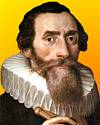
Kepler
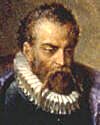
Brahe
Tycho & Kepler: the Unlikely Partnership..., by Kitty Ferguson. - book suggestion.
In 46 B.C. the Julian calendar began its first day of its first year. It replaced the Roman years ab urbe condita (“from the founding of the city,” referring to Rome). In the year 709 a.u.c., Julius Caesar established for his empire, a calendar based on a solar year of twelve months, a total of 365 days, with an extra day every fourth year. The previous year needed an additional 67 days, making that year an extraordinary 445 days long, in order to synchronize the Julian calendar with the equinoxes. Since the real solar year is slightly longer than the 365.25 day average year, as centuries passed, the calendar was again out of step with the seasons. On 24 Feb 1582, Pope Gregory XIII issued a papal bull for the Gregorian Calendar reform, which skipped 10 days, and refined the leap year rule. It was revised to take account of leap years from 4 Oct 1582, when a change to the present Gregorian calendar took place.«
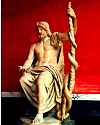
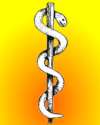
Staff of Aesculapius
In 4713 B.C., no particular event was recorded, but it became Julian day number 1 as a result of John W. F. Herschel's establishing a useful time system for astronomy by adopting the initial epoch of Joseph Justus Scaliger's cycle of 7980 years. Regardless of leap years and calendar changes by the Romans or Pope Gregory, the Julian date number enables the easy calculation of the number of days between two dates by simply taking the difference in their Julian day number. This is useful, say, for astronomers' calculations of the dates of eclipses. Thus, the Julian day number of a day is defined as the number of days since noon GMT on 1 Jan 4713 B.C. in the Proleptic Julian Calendar, and each Julian day number runs from noon to noon.«

